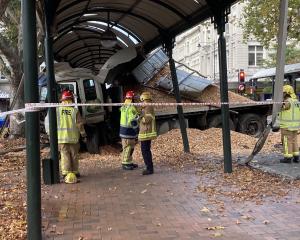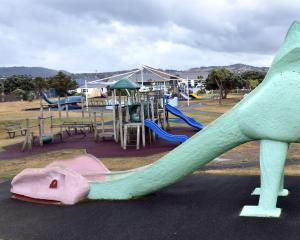The Otago Natural History Trust was yesterday urged to build its Orokonui Ecosanctuary visitor centre on a site closer to Orokonui, Waitati and Blueskin Bay.
A Dunedin City Council resource consent hearing committee spent seven hours listening to submissions for and against the trust's plans to build the centre on Blueskin road, at the top of its 300ha sanctuary.
Submitters from the local area objected to the location, design and prominence of the building and were concerned about effluent disposal.
Neighbouring farmer Graham Bennett argued that the visitor centre should be built near Dons Creek, on the 67ha of land near Orokonui that he had donated to the ecosanctuary.
He asked the committee to take into account the effect of the siting on the community, likening the advantages of the sanctuary to the Otago Central Rail Trail.
"Look at what the rail trail has done for all those small towns that have struggled for decades.''
Neighbour Larry Timpany supported the Dons Creek alternative as a way of overcoming his objection to the visual impact of the centre.
Trust chairman Dr Ralph Allen said the trust had originally considered using the old Orokonui psychiatric hospital buildings for the centre.
"However, it quickly became apparent that this would disadvantage local residents, who walk on the narrow access road and enjoy a quiet and relatively traffic-free neighbourhood.''
The Dons Creek alternative had attracted both support and opposition from residents and eventually, after much debate in the Blueskin Bay area, the proposed site at the top of the sanctuary was settled on.
"The trust has always endeavoured to please as many people as possible, which perhaps has been a mistake,'' Dr Allen said.
The proposed site allowed visitors easier access to differing ecological areas, would be more central if the ecosanctuary was extended into nearby land owned by the city council and would be preferable if Blueskin road became part of the Southern Scenic Route.
Committee chairman Colin Weatherall said the committee did not have the power to suggest to the trust that it build on an alternative site.
Visitor centre architect Tim Heath said the centre was 14m below Blueskin road and "will not silhouette'' against the sky.
Much of the centre would be made up from shipping containers, which would be altered to provide useful space and to minimise their impact on the landscape.
"The planned arrangement of the containers, the roofs and the [wooden, external] blinds will create considerable visual depth to the whole structure, as well as providing the visual glue of homogeneity.''
Bruce Bohm, of Blueskin road, considered using containers would open the door to other developments made up of "old car bodies and shipping containers''.
Landscape architect Michael Moore considered the building would not have a major impact on the natural landform and would appear as "an elegant architectural focal point''.
However, he told the hearing that "reasonably significant earthworks'' would be required for the access road, with some slopes up to 5m high and retaining walls up to 7.5m high.
He believed that "as gentle as possible'' gradients and planting of native shrubs would mitigate the visual impact.
Planning consultant Allan Cubitt, who supported the "rural tourist activity'' application, pointed out that it was not relevant for the committee to consider such things as water supply, effluent disposal, archaeological matters and traffic issues on Blueskin road.
But the trust went into detail about the "organic wet soil'' sewage system it planned to use before discharging treated effluent into the Orokonui Stream.
Russell Butson objected because he sold water from the stream to about 70 properties.
The committee reserved its decision.












